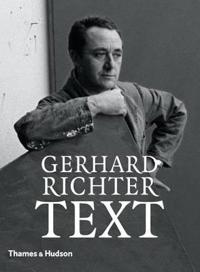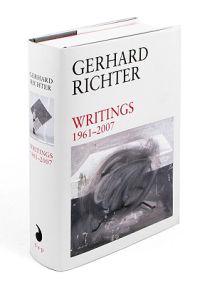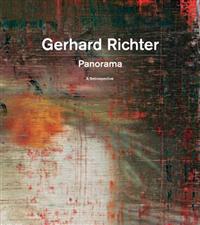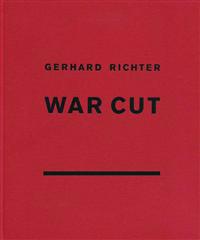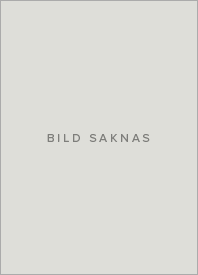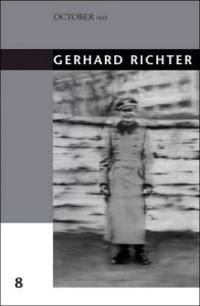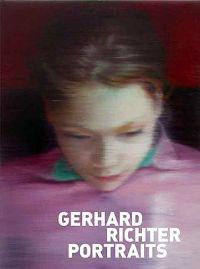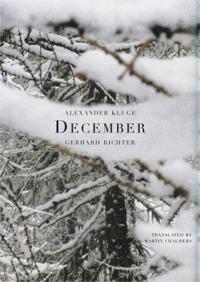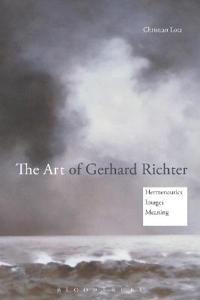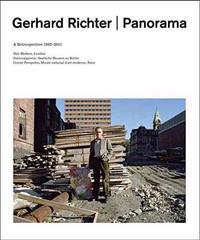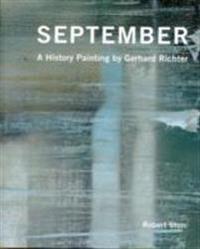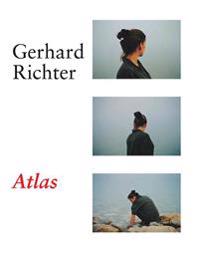Gerhard Richter: Text (Inbunden)
avGerhard Richter
ISBN: 9780500093467 - UTGIVEN: 2009-05Gerhard Richter is one of the foremost artists of his generation. Central to his work is a strong set of values which throughout his career he has expressed in extensive notes and writings, and in provocative and memorable public declarations in which he shows himself the master of the paradoxical s[...]
Gerhard Richter: Writings: 1961-2007 (Inbunden)
avGerhard Richter, Dietmar Elger, Hans Ulrich Obrist
ISBN: 9781933045948 - UTGIVEN: 200906Gerhard Richter: Panorama: A Retrospective (Inbunden)
avGerhard Richter, Nicholas Serota, Mark Godfrey
ISBN: 9781935202714 - UTGIVEN: 201110Published on the occasion of Richter's major exhibition at the Tate, "Gerhard Richter: Panorama" is the first and most complete overview of one of the greatest artistic achievements of our times. Where previous monographs have focused on a single genre within the artist's vast output, this stunningl[...]
Gerhard Richter: Patterns: Divided, Mirrored, Repeated (Inbunden)
avGerhard Richter
ISBN: 9781935202981 - UTGIVEN: 2012-08"Patterns" represents a brilliant new adventure in image-making and book-making by Gerhard Richter, who in recent years has produced several fascinating explorations of the possibilities of the artist's book. For this latest project, Richter took an image of his work "Abstract Painting" (CR: 7244) a[...]
Gerhard Richter: War Cut (English Edition) (Inbunden)
avGerhard Richter
ISBN: 9781935202998 - UTGIVEN: 201301In 1988, Gerhard Richter created one of the most controversial and fascinating political painting-cycles of all time, with his Baader-Meinhof series. In 2002, he returned to the theme of media and political truth with his artist's book "War Cut." For this project, Richter photographed 216 details of[...]
Gerhard Richter
ISBN: 9780226203232 - UTGIVEN: 2010-02Gerhard Richter is one of the most important and popular artists of the postwar era. For decades he has sought innovative ways to make painting more relevant, often through a multifaceted dialogue with photography. Today Richter is most widely recognized for the photo-paintings he made during the 19[...]
Afterness (Inbunden)
avGerhard Richter
ISBN: 9780231157704 - UTGIVEN: 2011-11-01Gerhard Richter's groundbreaking study argues that the concept of "afterness" is a key figure in the thought and aesthetics of modernity. It pursues questions such as: What does it mean for something to "follow" something else? Does that which follows mark a clear break with what came before it, or [...]
Gerhard Richter (Häftad)
ISBN: 9780262513128 - UTGIVEN: 200910The contemporary painter Gerhard Richter (born in 1932) has been heralded both as modernity's last painter and as painting's modern savior, seen to represent both the end of painting and its resurrection. Richter works in a dizzying variety of styles, from abstraction to a German cool pop that combi[...]
Gerhard Richter Portraits: Painting Appearances (Inbunden)
avPaul Moorhouse
ISBN: 9780300151596 - UTGIVEN: 200904Gerhard Richter Patterns (Inbunden)
ISBN: 9780500093726 - UTGIVEN: 2012-10This publication documents Gerhard Richters experiment of taking an image of an original abstract painting and dividing it vertically into two. Each divided part is divided again, mirrored and repeated, producing ever narrower strips, which results in patterns. A total of 238 selected patterns are p[...]
Gerhard Richter
ISBN: 9780854882052 - UTGIVEN: 2012-09This book provides a critical tool for navigating Atlas, bringing together Richter's own writings alongside commentaries by an international range of curators, critics and art historians. Originally published in 2003 to coincide with the exhibition Gerhard Richter: Atlas at the Whitechapel Gallery, [...]
December (Inbunden)
avAlexander Kluge, Gerhard Richter, Martin Chalmers
ISBN: 9780857420350 - UTGIVEN: 201206In the historic tradition of calendar stories and calendar illustrations, author and film director Alexander Kluge and celebrated visual artist Gerhard Richter have composed "December", a collection of thirty-nine stories and thirty-nine snow-swept photographs for the darkest month of the year. In s[...]
The Art of Gerhard Richter
ISBN: 9781472589019 - UTGIVEN: 2015-10The Art of Gerhard Richter: Hermeneutics, Images, Meaning presents the first philosophical investigation of, arguably, one of the most popular and important painters working today, Gerhard Richter. From monochrome painting and photo realism to conceptual art and gesture-expressive painting, Richter [...]
Gerhard Richter: Panorama (häftad)
ISBN: 9781849764117 - UTGIVEN: 2016-05Gerhard Richter is widely regarded as one of the most important painters at work today. He is as well known for his figurative works as he is for his abstract paintings, often combining elements of both in ground-breaking ways[...]
Gerhard Richter: Panorama (Häftad)
ISBN: 9781854379450 - UTGIVEN: 201108Gerhard Richter is widely seen as one of the most important painters at work in the world today. Born in Dresden, Germany, in 1932, he left for the West in 1961, settling in Dusseldorf, where he held his first exhibition in 1963. He has exhibited internationally for the last five decades, including [...]
September: A History Painting by Gerhard Richter (häftad)
ISBN: 9781854379641 - UTGIVEN: 2011-02Gerhard Richter (b. 1932) is one of the most influential artists at work today. His painting September, a response to the attacks on the World Trade Center on September 11, 2001, was made some four years after the event. The eminent American critic and curator Robert Storr, who has had a long worki[...]
Atlas (Inbunden)
avGerhard Richter, Helmut Friedel
ISBN: 9781933045474 - UTGIVEN: 201111This monumental and comprehensive publication maps the ideas, processes, life and times of one of the most important painters of our time. Conceived and closely edited by Gerhard Richter himself, "Atlas" cuts straight to the heart of the artist's thinking, collecting more than 5,000 photographs, dra[...]
Gerhard Richter: Panorama: A Retrospective: Expanded Edition
ISBN: 9781938922923 - UTGIVEN: 2016-05First published on the occasion of the major retrospective exhibition that opened at Tate Modern in 2011, Gerhard Richter: Panorama is the most complete overview of the artist's entire career to date. This stunningly illustrated survey encompasses works from the late 1950s to the present--photo-pain[...]
Nachricht von ruhigen Momenten (Inbunden)
avAlexander Kluge, Gerhard Richter
ISBN: 9783518224779 - UTGIVEN: 20130819

